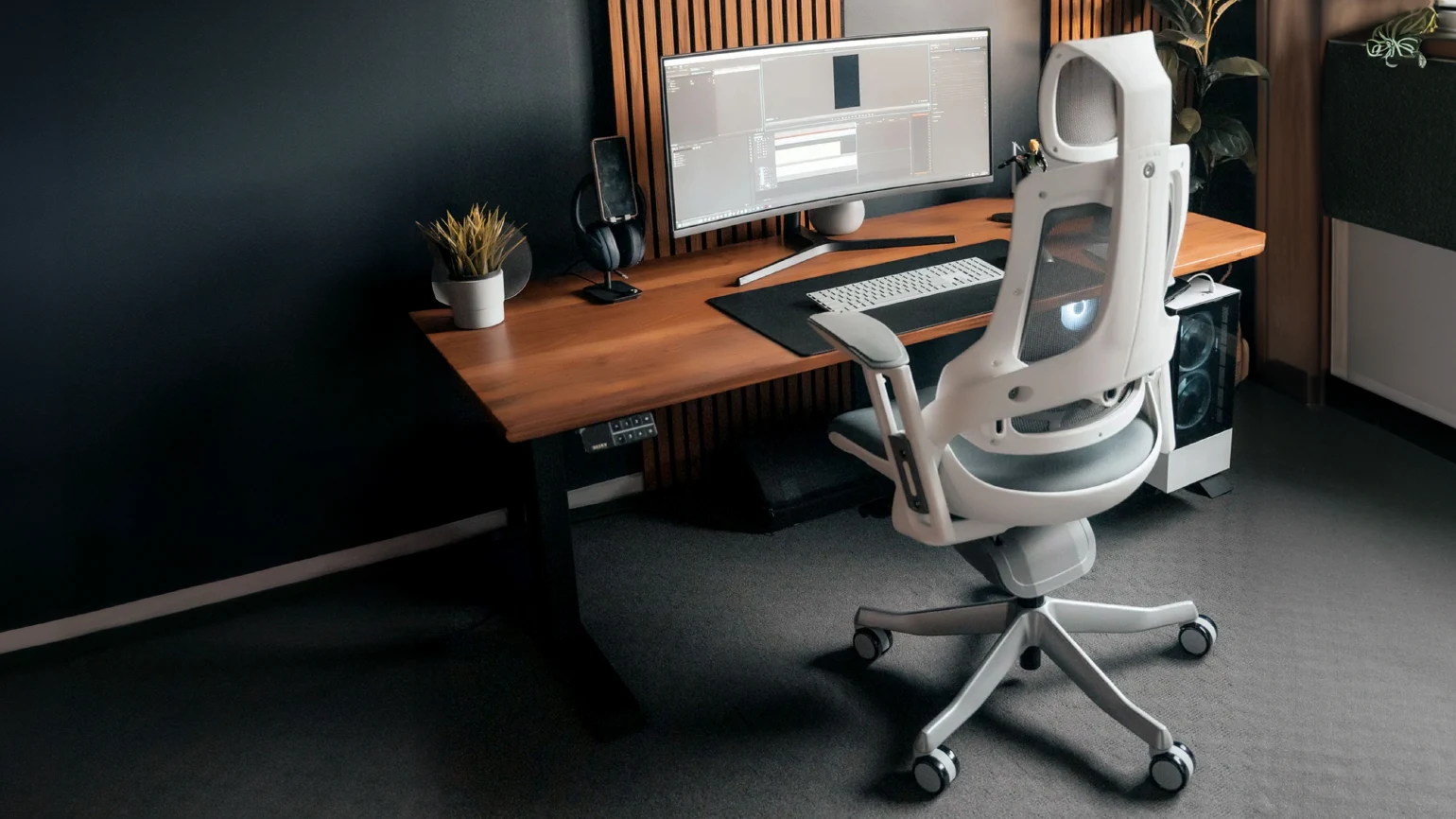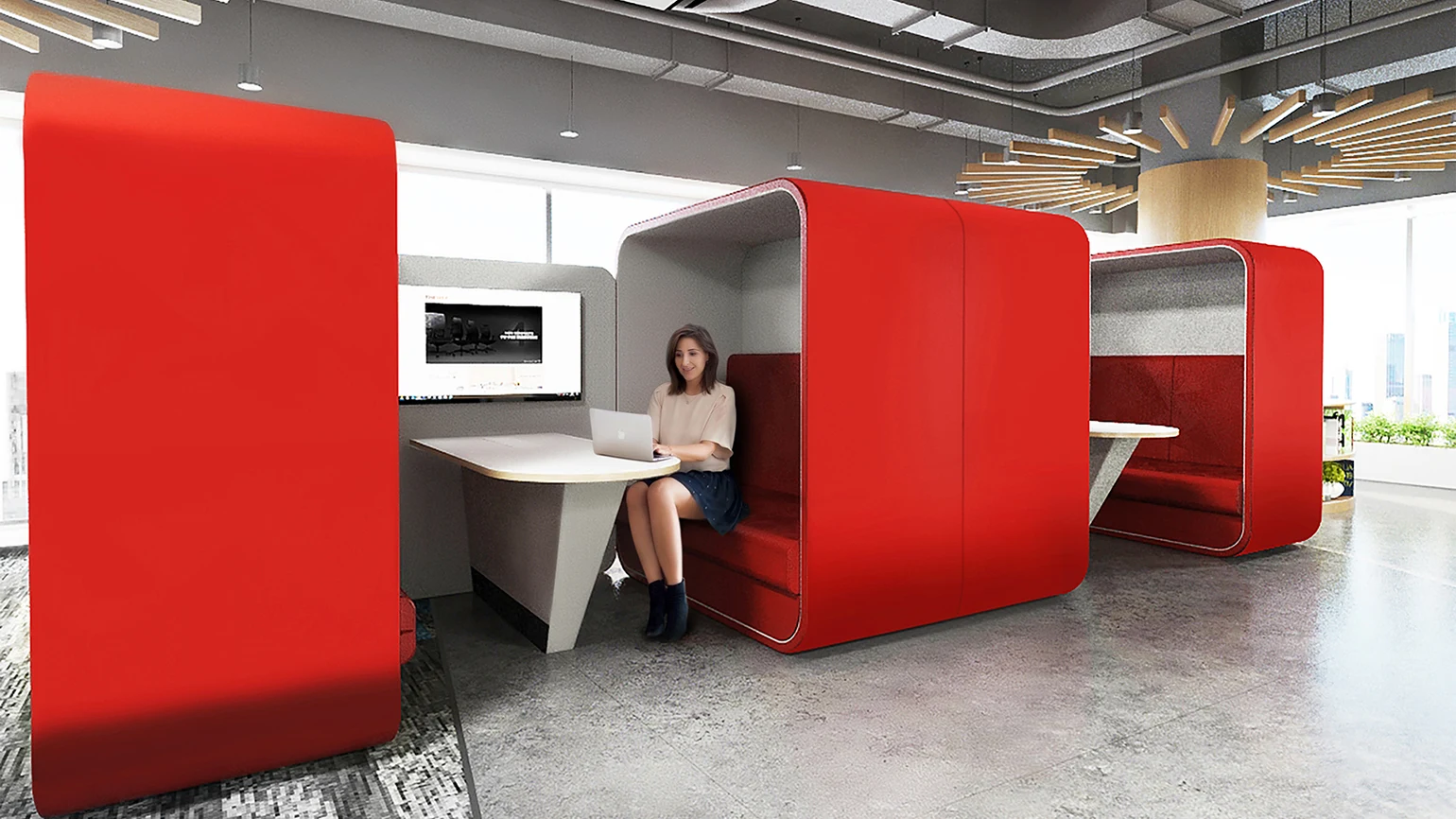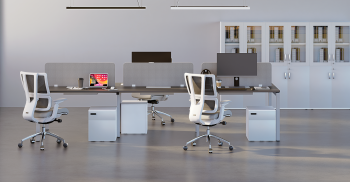5 ESSENTIAL PRINCIPLES FOR A HEALTHY WORKSTATION
An ideal workstation doesn’t just help you stay focused, it protects both your physical and mental well-being throughout the day. Even if you've invested in ergonomic desks, quality office chairs, or modern equipment, performance still depends heavily on how effectively you use them.
Here are five key principles to help you maintain a healthy and ergonomic workstation, increase movement, and boost productivity every single day.

1. Align Your Vision, It Starts With Your Eyes
If you're spending most of your day in front of a screen especially with back-to-back video calls start with proper screen alignment to reduce strain on your eyes, neck, and shoulders.
-
Eye-Level Alignment: Keep your screen aligned with your shoulders neither tilted to the left nor right.
-
Ideal Distance: Your monitor should be about one arm’s length away. If you can’t reach it, you’re too far. If you can touch it too easily, you’re too close.
-
Screen Height: The top of your screen should be at or just below eye level to avoid craning your neck.
-
Proper Lighting: Make sure your workstation is well-lit so your eyes don’t have to strain to read notes or the keyboard.
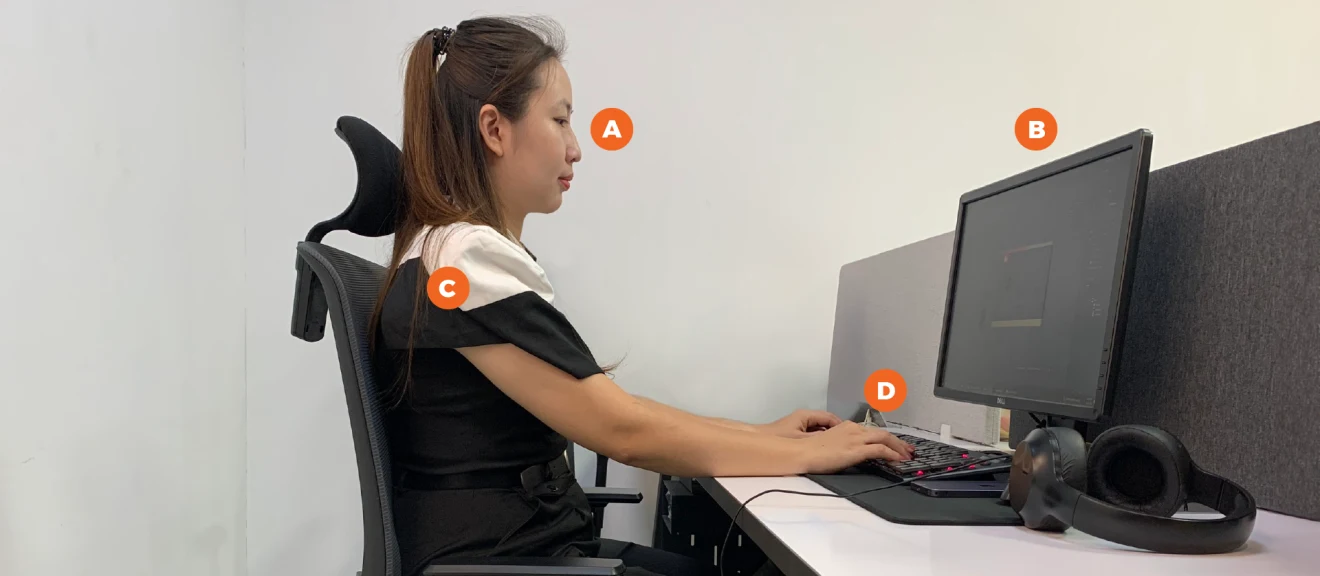
2. Optimize Contact Points, Reduce Body Stress
Every contact point between your body and the workstation matters. Sitting in a posture that supports your joints can significantly reduce the risk of strain injuries in your wrists, shoulders, and spine.
-
Arms: Keep your upper arms relaxed and close to your sides.
-
Elbows: Maintain a natural angle between 70–120 degrees.
-
Wrists: Keep them in a neutral, straight position while typing or using a mouse.
-
Prevent Fatigue: Adjust your posture as soon as you feel tension in your shoulders, neck, or hands.
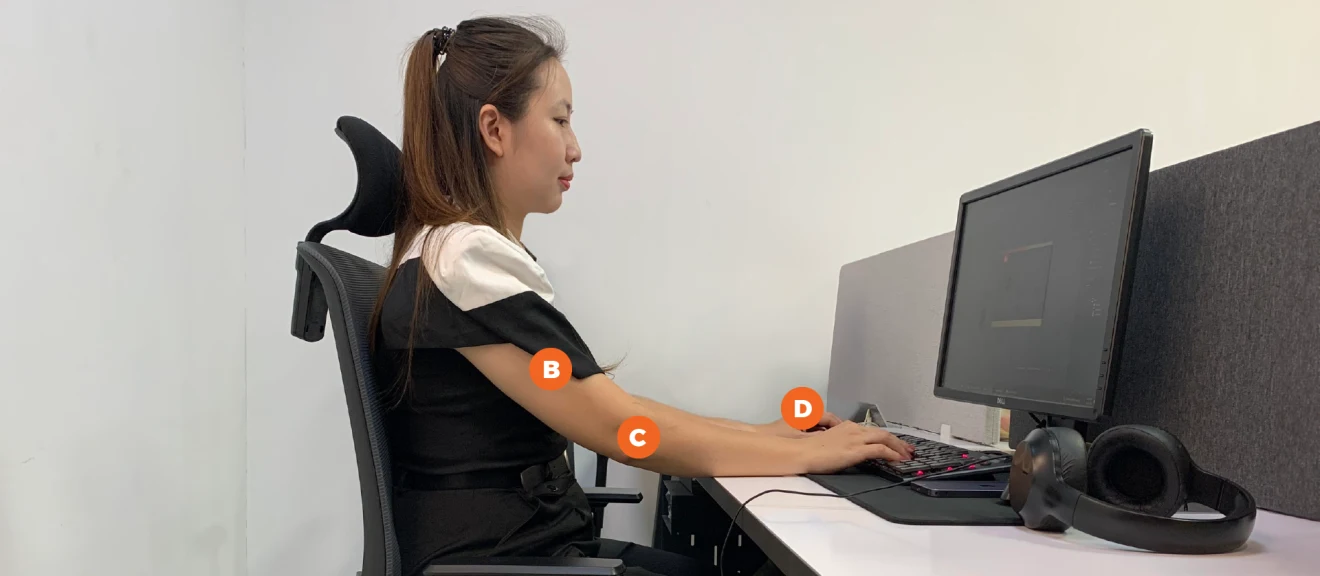
3. Sit Correctly, The Foundation of Sustainable Performance
A truly ergonomic workstation starts with the right chair. A good office chair not only supports your spine but also helps you maintain healthy posture throughout the day.
-
Customize Your Chair: Adjust the seat height, backrest, and armrests to match your body proportions.
-
Body Angle: Ensure your torso and thighs form an angle of 90 degrees or more.
-
Armrests: Armrests shouldn’t obstruct your access to the desk adjust their height as needed.
-
Knee Clearance: Make sure there’s enough space between the top of your knees and the bottom of the desk.
-
Feet Placement: Keep your feet flat on the floor or on a footrest to avoid pressure build-up.
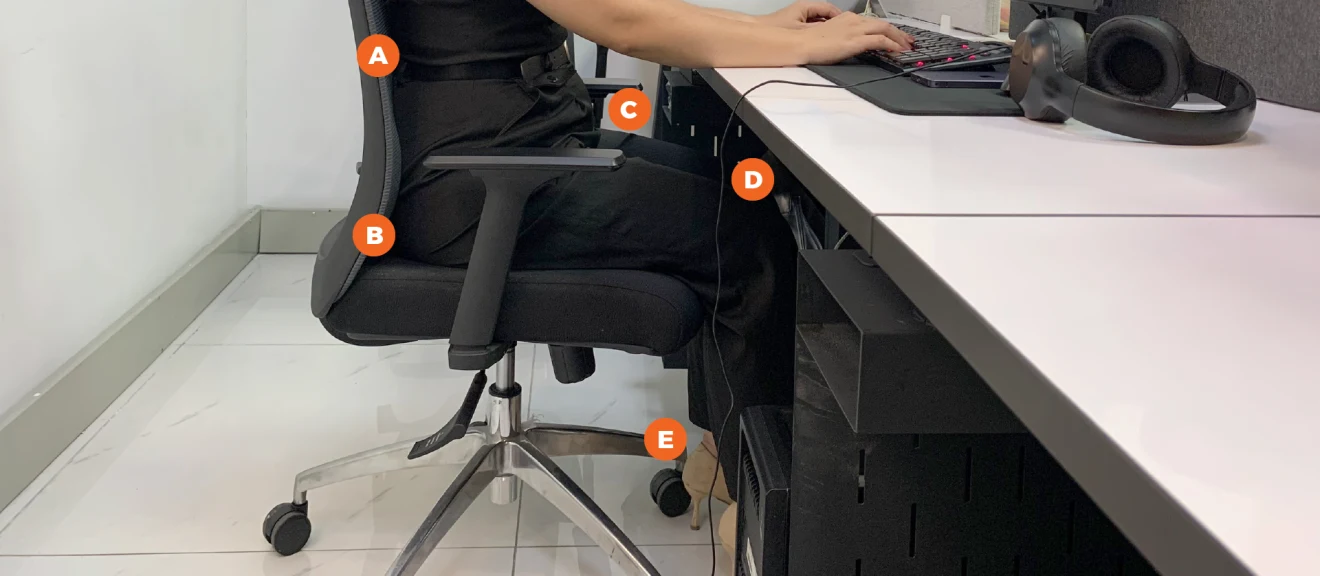
4. Alternate Standing, Vary Your Work Postures
Prolonged sitting can lead to lower back pain, stiff shoulders, and poor circulation. That’s why incorporating more movement into your work routine is vital in today’s hybrid work environment.
-
Height-Adjustable Desks: Use a sit-stand desk or height-adjustable desk converter if available.
-
Start Small: Begin by standing for 15 minutes a day, gradually increasing your time as your body adapts.
-
Keep Moving: Don’t remain static while standing. Shift your weight, move your legs, or do light stretches to keep circulation going.
-
Clear the Floor: Ensure there are no obstacles like cords or chair legs that might trip you.
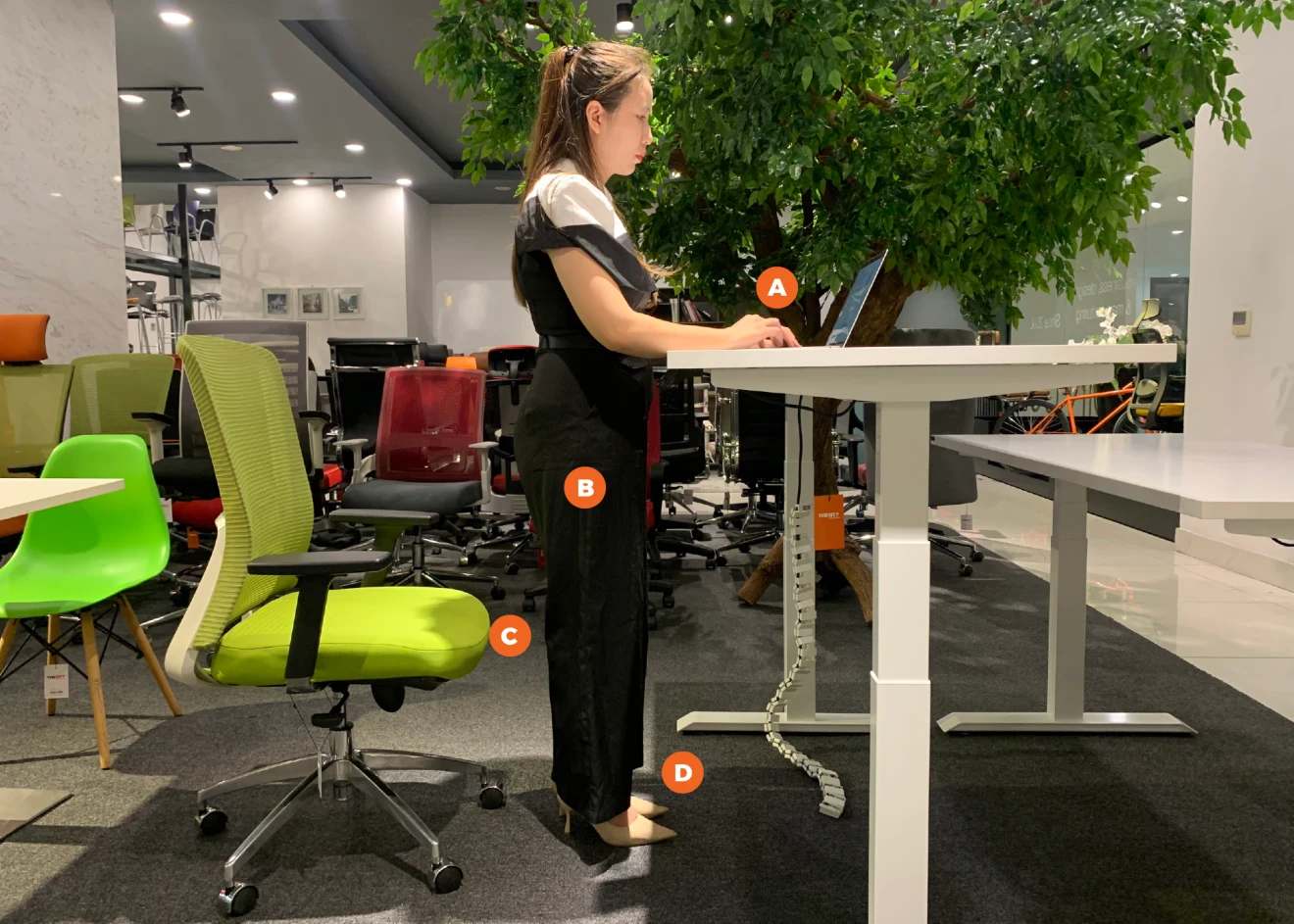
5. Forward-Leaning Posture, Active Work Mode
In addition to sitting and standing, the forward-leaning posture supports active engagement and is often used with multi-position chairs or adjustable-height desks.
-
Choose the Right Chair: Opt for ergonomic chairs that support forward-leaning, such as the Tone, Genesis, or Aston.
-
Open Hip Angle: Maintain a torso-to-thigh angle of 90 degrees or greater.
-
No Armrest Needed: Armrests may obstruct movement in this posture avoid using them.
-
Stay Stable: Lock chair wheels or ensure the chair doesn’t slide on the floor surface.
-
Firm Footing: Keep your feet flat on the ground or on a stable footrest to support body weight.
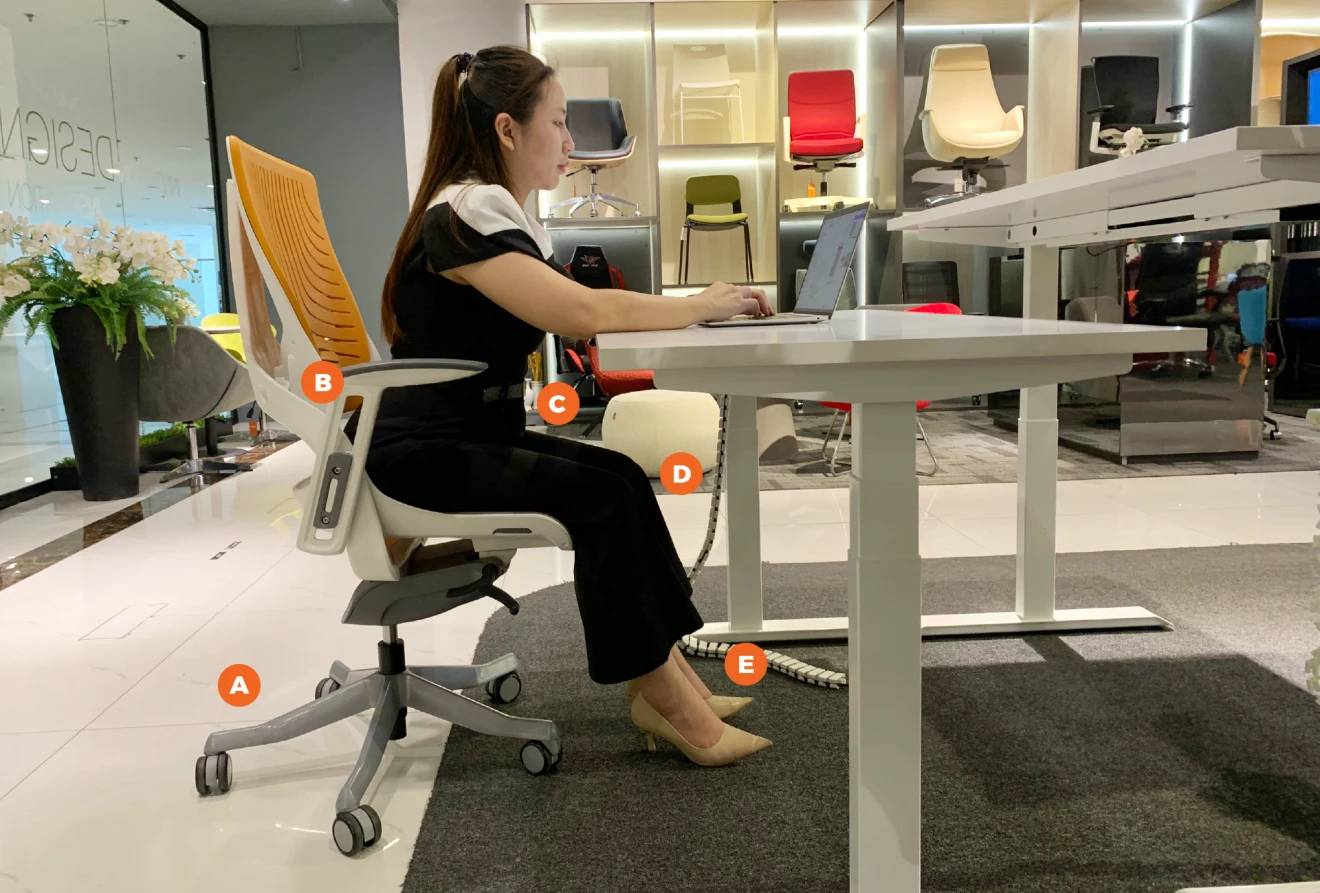
Conclusion
A healthy workstation doesn’t need to be complicated but it must be intentional. Whether you’re working at home or in the office, applying ergonomic principles helps you work more efficiently, reduce physical stress, and improve your overall quality of life.

